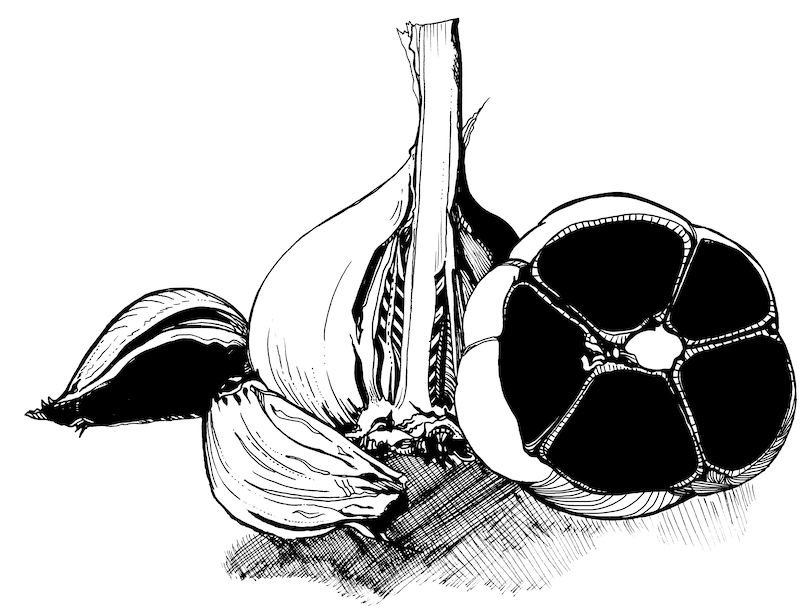Make Your Own Black Garlic

When you harvest your garlic this year, don’t rush the whole crop into curing—save some for the blackening chamber.
Black garlic—whole garlic heads slowly caramelized over several weeks—is an extreme example of cooking’s capacity to transform. While many Western cooks think of garlic as a pungent, savory ingredient, black garlic offers a seemingly impossible contrast from the same original clove: chewy and sweet, with notes of coffee, licorice or tamarind.
The difference between the two cloves is a matter of warm, moist heat, applied using a method typically attributed to the culinary traditions of Korea, where aging whole heads of garlic in warm earthen pots has been done for centuries.
In a contemporary kitchen, homemade black garlic is as simple as fresh garlic heads, wrapped tightly in foil or vacuum sealed, and kept at 140° for about a month. A rice cooker left on the “keep warm” setting does the trick; just remember to place a cookie cutter or other barrier between the heating element on the bottom and your garlic. Dehydrators are also a possibility if your thermostat goes high enough and the garlic is completely sealed to avoid drying out. VT Compost’s Karl Hammer has made black garlic by shoving garlic into the center of his huge, hot compost piles, which can be managed to maintain the temperature and humidity.
You can speed up the process by days or weeks by raising the temperature as high as 175°, although you’ll sacrifice sweetness and texture the faster you go.
Varieties with fewer, larger cloves and milder flavor, like Music or Georgian Crystal, will give the best texture and deepest flavor, but any fresh garlic will work, and each variety will offer a slightly different profile.
Finished black garlic keeps at room temperature for several weeks in a sealed plastic bag, longer if refrigerated. The cloves are sweet enough to eat on their own, but try blending them into an aioli with mortar and pestle, or substituting them for fresh garlic in a salad dressing. Once you’re familiar with the flavor, you’ll find exciting uses for black garlic in a wide variety of dishes.
For further explanation of the process, the history, and novel applications of the blackening process to other vegetables, fruits, and even nuts, see The Noma Guide to Fermentation.
— Khris Hogg
